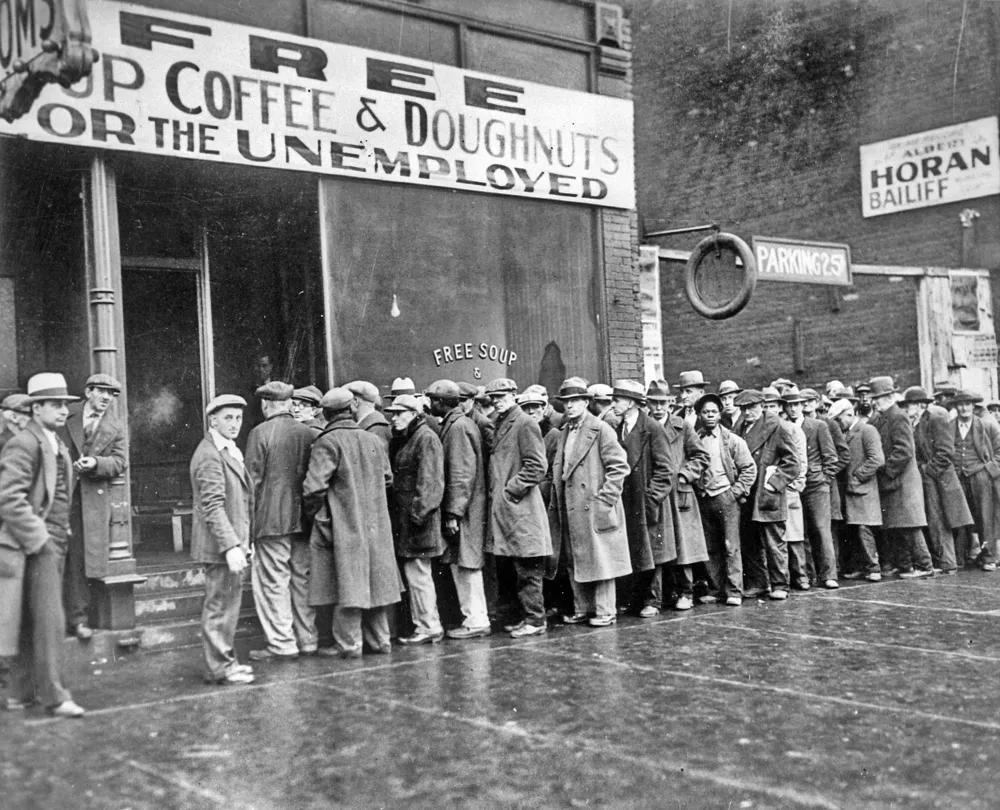Introduction
On the chilly autumn day of October 29, 1929, Wall Street, the financial hub of the United States, witnessed an event that would forever be etched in the annals of human history. The bells of panic tolled as share prices plummeted, giving birth to the infamous stock market crash known as Black Tuesday. It was the bitter foretaste of an impending economic catastrophe, marking the beginning of the Great Depression that engulfed not only America but the entire world for the better part of a decade.
The Event
The prosperous Roaring ’20s came to an abrupt halt as financial optimism led to complacency. The United States had enjoyed a decade of extraordinary economic growth, leading to widespread speculation in securities markets. As a result, stocks were overvalued, and the bubble was primed to burst.
On October 29, investors frantically unloaded their shares, resulting in a staggering 16 million transactions in a single day. In the week leading up to Black Tuesday, the market had already been shaky, with high levels of selling activity. However, this day marked an unprecedented crash, wiping out billions of dollars of wealth in mere hours. The ensuing panic set off a ripple effect, causing banks and businesses to collapse in its wake. It was indeed the collective gasp that heralded the onset of the Great Depression.

Interesting Facts for Kids:
- The stock market crash on October 29, 1929, is famously known as Black Tuesday.
- This crash remains the most devastating in U.S. history, with the stock market losing about 12% of its value in one day.
- Black Tuesday didn’t single-handedly cause the Great Depression but rather was the result of years of reckless economic behavior, symbolizing the beginning of a challenging era in American history.
Educational Activities for Kids:
- Stock Market Game: Children can engage in a simplified stock market game to grasp the concepts of buying and selling stocks, the associated risks, and how sudden changes can impact investors.
- Timeline Chart: They can create a timeline chart illustrating the events leading up to and following Black Tuesday.
- Role-play: Kids can role-play various figures involved, such as stockbrokers, investors, etc., to gain a deeper understanding of their roles and the consequences of the crash.
Conclusion
The occurrence of Black Tuesday on October 29, 1929, remains a significant event in human history. It serves as a stern reminder of the dangers of unchecked financial speculation and the devastating impact it can have on the economy, leading to widespread suffering. Although it was a dark day for the world, it also led to crucial financial regulations and controls that help prevent such disasters today.
References:
1. Chernow, R. (2001). The House of Morgan: An American Banking Dynasty and the Rise of Modern Finance. Grove/Atlantic, Inc.
2. Galbraith, J. K. (2009). The Great Crash 1929. Houghton Mifflin Harcourt.
3. Klein, M. W. (2001). Rainbow’s End: The Crash of 1929. Oxford University Press.







What do you think?
Show comments / Leave a comment